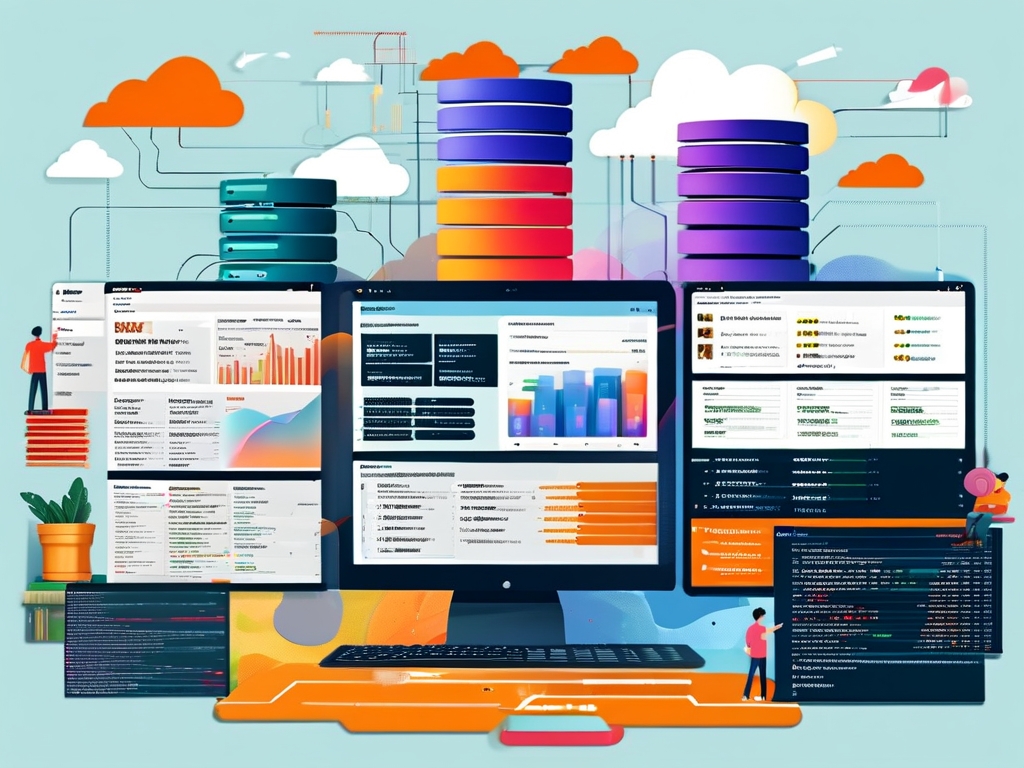In the era of cloud computing, designing efficient and scalable database tables is critical for building robust applications. Unlike traditional on-premises databases, cloud-native databases require careful consideration of scalability, cost optimization, and distributed architecture. This article explores best practices for table design in cloud development environments, focusing on platforms like AWS DynamoDB, Google Cloud Firestore, and Azure Cosmos DB.

1. Core Principles of Cloud Database Table Design
a. Scalability-First Mindset Cloud databases thrive on horizontal scaling. Instead of relational normalization, prioritize:
- Denormalization: Reduce joins by embedding frequently accessed data.
- Sharding Strategies: Use partition keys (e.g., user ID or geographic region) to distribute workloads.
- Avoid "Hot Partitions": Ensure even data distribution to prevent throttling.
b. Cost-Aware Structure Cloud databases often charge by operations and storage. Optimize by:
- Compressing Redundant Fields: Use concise data types (e.g., epoch timestamps instead of ISO strings).
- TTL (Time-to-Live) Policies: Automatically expire obsolete records.
- Columnar Storage: For analytics-heavy tables, use formats like Parquet in cloud data warehouses.
c. Schema Flexibility Leverage NoSQL strengths while maintaining consistency:
- Versioned Schemas: Add metadata like
schema_versionto manage migrations. - Sparse Columns: Allow optional fields without bloating rows.
- Polymorphic Data Patterns: Use discriminators (e.g.,
type: "invoice") for mixed entity storage.
2. Step-by-Step Table Design Process
Step 1: Define Access Patterns List all CRUD operations and queries upfront. For example:
- "Fetch user's last 10 orders sorted by date."
- "Search products by category and price range."
Step 2: Choose Primary Keys Wisely
- Composite Keys: Combine attributes (e.g.,
USER#12345+ORDER#2024) for targeted queries. - Global vs. Local Secondary Indexes: Balance query flexibility and cost.
Step 3: Normalize vs. Denormalize
- Normalize reference data (e.g., currency codes) to avoid duplication.
- Denormalize read-heavy attributes (e.g., product names in order items).
Step 4: Optimize for Cloud-Specific Features
- Serverless Triggers: Design tables to integrate with cloud functions (e.g., AWS Lambda).
- Geo-Partitioning: For global apps, partition by region to reduce latency.
3. Anti-Patterns to Avoid
- Over-Indexing: Each index increases write costs and storage.
- Megabyte-Sized Items: Cloud databases often limit item sizes (e.g., DynamoDB's 400KB cap).
- Ignoring Consistency Models: Understand trade-offs between strong and eventual consistency.
4. Security and Compliance Considerations
- Field-Level Encryption: Encrypt sensitive fields (e.g., PII) client-side.
- Access Control Tags: Assign labels like
confidential: truefor IAM policies. - Audit Logging: Design tables to store access metadata (e.g.,
last_modified_by).
5. Real-World Case Study: E-Commerce Platform
A SaaS company migrated from MySQL to Google Cloud Firestore. Key design changes:
- Orders Table: Combined user profiles and order history using nested documents.
- Product Catalog: Stored as collections with regional pricing variations.
- Analytics: Separated transactional and analytical data using BigQuery federated queries. Result: 60% lower latency and 40% cost reduction.
6. Tools and Validation
- Data Modeling Tools: Use NoSQL Workbench (AWS) or Azure Data Studio.
- Load Testing: Simulate peak traffic with tools like Locust.
- Cost Calculators: Estimate expenses via cloud provider dashboards pre-launch.
Cloud database table design demands a paradigm shift from traditional relational thinking. By prioritizing scalability, cost efficiency, and cloud-native features, developers can build systems that leverage the full potential of distributed architectures. Always validate designs against real-world access patterns and continuously monitor performance metrics post-deployment.





